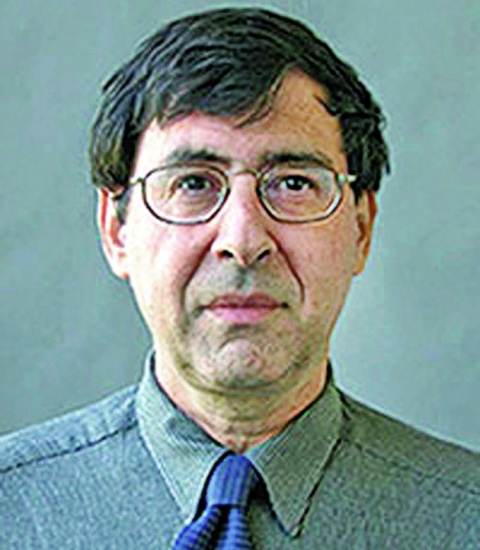Columbia College | Columbia University in the City of New York
David J. Shapiro ’68, GSAS’73, Poet, Art Historian and Professor

Shapiro, who died on May 4, 2024, at 77 in the Bronx, is depicted in the image — taken by Gerald Upham ’68, published in Life and distributed globally — seated behind the desk of President Grayson Kirk, whose office in Low Library had been occupied by student demonstrators. As other students gaze out oversized windows onto the turbulent campus, Shapiro sits calmly, sunglasses hiding his eyes, one of Kirk’s cigars held upright in his right hand.
To supporters, the photo became a symbol of student spirit and determination. To opponents, it came to symbolize the descent into disorder that soon would sweep college campuses around the country. To Shapiro, it was a cautionary moment; he once told of knowing at the time that his actions could land him in “deep trouble” and recounted that as the picture was taken, he heard a voice within him saying, “Be more prudent, you idiot.”
Shapiro, who was clubbed when police cleared out the demonstrators but not arrested, never wavered from his opposition to the Vietnam War. The scene in Kirk’s office, which he described as “infantile leftism,” was another matter. He told the Bergen (N.J.) Record in 2018 that he would “like to apologize” for the “rudeness of my youth” and described his pose in the photograph as a “parody.”
“No one who knew David could quite envision him as the swaggering young hippie protester” depicted in the photograph, writer Joyce Carol Oates posted after Shapiro’s death.
Born on Jan. 2, 1947, in Newark, N.J, Shapiro spent summers in Deal on the Jersey Shore, which he wrote about in his 1969 collection, Poems From Deal. He continued his studies at Clare College at the University of Cambridge, where he earned a master’s in 1970, then returned to Columbia and received a Ph.D. in English and comparative literature in 1973. Shapiro taught English at Columbia before moving in 1981 to William Paterson University in Wayne, N.J., where he was a professor of art history until his retirement in 2017.
A literary prodigy, Shapiro was publishing poems in European and South African journals by the age of 10. At 14, he published a poem in The Antioch Review, his first in the United States. And as an 18-year-old freshman at the College in 1964, he published his first poetry collection, January.
He was often categorized as part of the New York School — an experimental group of visual artists, dancers and poets, including John Ashbery GSAS’50, Frank O’Hara and Kenneth Koch, a legendary Columbia professor who mentored Shapiro.
Among Shapiro’s most noted poems was “The Funeral of Jan Palach,” about the Czech student who died after setting himself on fire in Prague in 1969 to protest the Soviet‐led invasion of Czechoslovakia. The poem helped inspire a monument to Palach in Prague.
Shapiro’s poetry collections included A Man Holding an Acoustic Panel (1971), To an Idea (1983), After a Lost Original (1994) and New and Selected Poems (1965–2006). His prose included John Ashbery: An Introduction to the Poetry (1979), one of the first volumes to explore the enigmatic American poet who influenced Shapiro’s work, and monographs on artists Piet Mondrian, Jasper Johns and Jim Dine.
Shapiro is survived by his wife of 53 years, Lindsay Stamm Shapiro; son, Daniel ’07; and three sisters.
— Alex Sachare ’71
Issue Contents
Published three times a year by Columbia College for alumni, students, faculty, parents and friends.
Columbia Alumni Center
622 W. 113th St., MC 4530, 6th Fl.
New York, NY 10025
212-851-7852
cct@columbia.edu
Columbia Alumni Center
622 W. 113th St., MC 4530, 4th Fl.
New York, NY 10025
212-851-7488
ccalumni@columbia.edu

